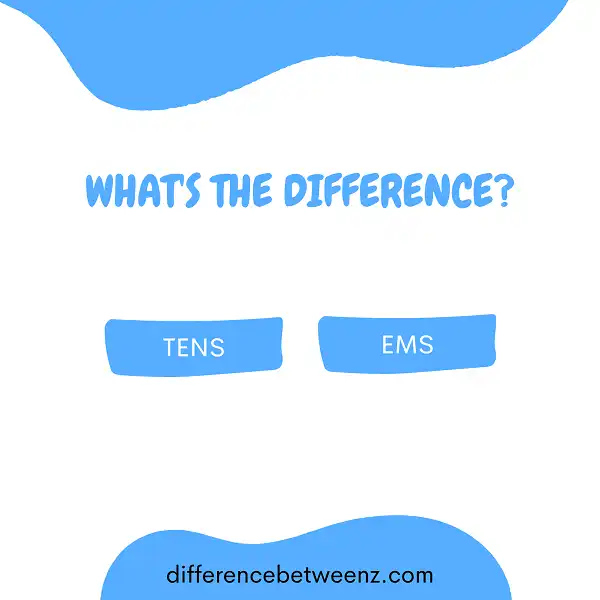If you are considering using electrical stimulation to manage pain and/or muscle rehabilitation, it’s important to understand the major differences between Transcutaneous Electrical Nerve Stimulation (TENS) and Electrical Muscle Stimulation (EMS). While both of these modalities offer therapeutic efficacy, the type of application used may make all the difference in achieving the best results. In this blog post, we’ll delve into what exactly TENS and EMS treatments entail, how they compare to one another, and why you may want to consider either as a potential treatment option.
What is TENS?
- TENS, or Transcutaneous Electrical Nerve Stimulators, utilize electrical current to stimulate the nerve endings in order to reduce pain and provide relief.
- TENS is an alternative form of treatment to medications and injections – it is a safe and noninvasive option for those looking for pain relief. TENS works by sending small electrical impulses through the skin that interfere with pain signals sent from the nerves to the brain.
- These impulses also stimulate the body’s own production of endorphins, natural painkillers. TENS has been clinically proven effective in reducing chronic and acute levels of pain, improving mobility, and increasing overall well-being. Its benefits are numerous and make TENS a powerful tool for anyone suffering from any form of physical discomfort.
What is EMS?
EMS electronic muscle stimulation is a powerful tool used in physical therapy and sports medicine to target weakened muscles or heal certain injuries. EMS works by passing an electric current through a person’s skin, down to their muscles, and stimulates contractions that are similar to natural contractions; EMS also increases blood flow and oxygenation to the treated area.
EMS sessions typically involve various levels of intensity, frequency, pulse width, and duration to best suit an individual’s recovery needs. This type of treatment is extremely helpful for regulating muscle tone, reducing pain, improving circulation, strengthening weak muscle fibers, increasing range of motion, and aiding in injury recovery. EMS therapy is safe for people of all ages when proper usage guidelines are followed by certified professionals.
Difference Between TENS and EMS
TENS (Transcutaneous Electrical Nerve Stimulation) and EMS (Electrical Muscle Stimulation) are two types of therapies that have been used to alleviate pain and treat various muscle-related conditions.
- TENS is a non-invasive form of therapy. It sends electrical impulses through the skin, to the nerves responsible for pain sensations, and helps by blocking or reducing them.
- TENS stimulates the nerve fibers using electrical pulses which in turn trigger the release of endorphins, helping lower pain levels. On the other hand, EMS is used to strengthen weakened muscles as well as improve muscle flexibility, endurance, and strength.
- It uses alternating electrical waves that enter deep into the muscle fibers causing them to contract which trains and builds their strength gradually over time.
Unlike TENS, EMS does not provide relief from acute or chronic pain; however, it can be combined with TENS to provide enhanced results for patients suffering from such conditions.
Conclusion
If you’re still unsure about the difference between TENS and EMS, don’t worry. We’ve got your back. Here are a few key points that should help clear things up. First, TENS uses electrical current to stimulate nerve cells while EMS sends an electrical current through muscles. Second, TENS is usually used for chronic pain relief while EMS is often used for muscle conditioning or strengthening. Finally, TENS units tend to be small and portable while EMS units are larger and more expensive.


